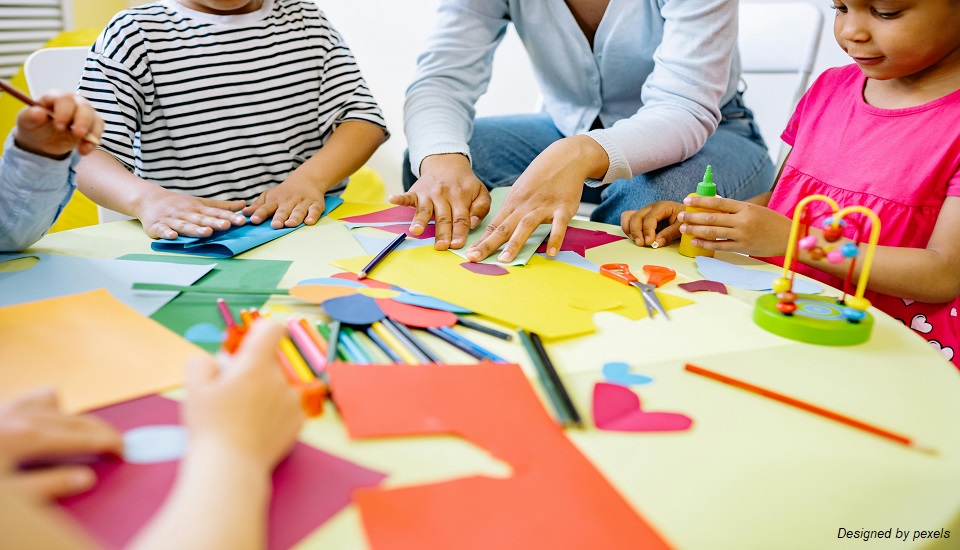Harnessing the Potential of Multimodal Learning: A Complete Guide
15th April 2024

Earlier in the learning scenarios, teachers used to deliver information through a single modality, such as text-based materials or lectures. But in today's dynamic educational landscape, including diverse learning styles is vital for effective knowledge distribution. One such teaching approach is multimodal learning, a methodology that leverages multiple sensory modalities to enhance comprehension and retention. In this blog, we'll delve into what multimodal learning entails, its benefits, and how it's transforming education.
What is Multimodal Learning?
Multimodal learning involves various sensory channels such as visual, auditory, kinesthetic, and tactile to deliver information. Unlike traditional unimodal teaching methods that rely solely on one mode (typically auditory or visual), multimodal learning recognizes that people have distinct preferences and strengths when it comes to absorbing information. By engaging multiple senses simultaneously, learners can better process and internalize concepts.
How Does Multimodal Learning Work?

- Visual Learning: Visual aids like diagrams, charts, and videos are powerful tools in multimodal learning. They help in demonstrating complex concepts, making abstract ideas more perceptible, and stimulating the visual cortex for improved understanding.
- Auditory Learning: Audio elements such as lectures, podcasts, or verbal explanations appeal to auditory learners. They rely on listening and processing spoken information, which can be added with visual aids for strengthening.
- Kinesthetic Learning: Kinesthetic learners flourish through hands-on experiences and physical activities. In multimodal learning, incorporating interactive exercises, simulations, or experiments allows them to actively engage with the material, promoting deeper understanding.
- Tactile Learning: Hands-on learning involves physical manipulation of objects or materials. This modality is often utilized in fields like science and engineering, where experiments and practical demonstrations play a crucial role in learning.
Benefits of Multimodal Learning
- Enhanced Engagement: By catering to different learning likings, multimodal approaches keep learners actively engaged throughout the educational development. This leads to improved motivation and participation.
- Improved Retention: Engaging multiple senses simultaneously strengthens neural connections, leading to better retention of information. Learners are more likely to remember concepts when they've experienced them through various modalities.
- Catering to Diverse Learners: Every individual has unique learning preferences and strengths. Multimodal learning acknowledges this diversity and provides a more inclusive educational experience, accommodating the needs of auditory, visual, kinesthetic, and tactile learners alike.
- Facilitation of Complex Concepts: Complex or abstract concepts can be challenging to grasp through traditional unimodal methods. Multimodal learning simplifies these concepts by presenting them through different perspectives, making them more accessible to learners.
- Promotion of Critical Thinking: Multimodal approaches encourage learners to analyze information from different angles, fostering critical thinking skills. By engaging with material through multiple modalities, students develop a deeper understanding of the subject matter and can make connections across various domains.
Applying Multimodal Learning
Integrating multimodal learning into educational practices requires careful planning and consideration. Here are some strategies for effective implementation:
- Identify Learner Preferences: Conduct assessments to determine the preferred learning modalities of your students. This information will guide the selection of appropriate multimodal resources and activities.
- Create Multimodal Resources: Develop or curate a diverse range of resources that incorporate visual, auditory, kinesthetic, and tactile elements. This could include videos, interactive simulations, hands-on experiments, and graphic organizers.
- Encourage Collaboration: Collaborative learning activities allow students to engage with material from different perspectives. Encourage group discussions, peer teaching, and project-based assignments to promote collaborative learning experiences.
- Provide Flexibility: Offer flexibility in how students engage with course materials. Provide options for accessing content in different formats to accommodate individual learning preferences and accessibility needs.
- Evaluate Effectiveness: Continuously assess the effectiveness of multimodal learning strategies through feedback, assessments, and student performance. Adjust and refine your approach based on insights gained from evaluation.
To End With
Multimodal learning represents a paradigm shift in education, recognizing the diverse needs and preferences of learners. By leveraging multiple sensory modalities that you can learn with teacher training courses, educators can create more engaging, inclusive, and effective learning experiences.
As we continue to explore innovative approaches to education, multimodal learning stands out as a powerful tool for unlocking the full potential of learners in today's digital age.
We believe education should be accessible for everyone. That’s why we don’t charge for our blogs. Find the right course that will help you in your career with us, contact us at 1800–212–6400. You can mail us at act@asiancollegeofteachers.com
Written By: Sonal Agrawal